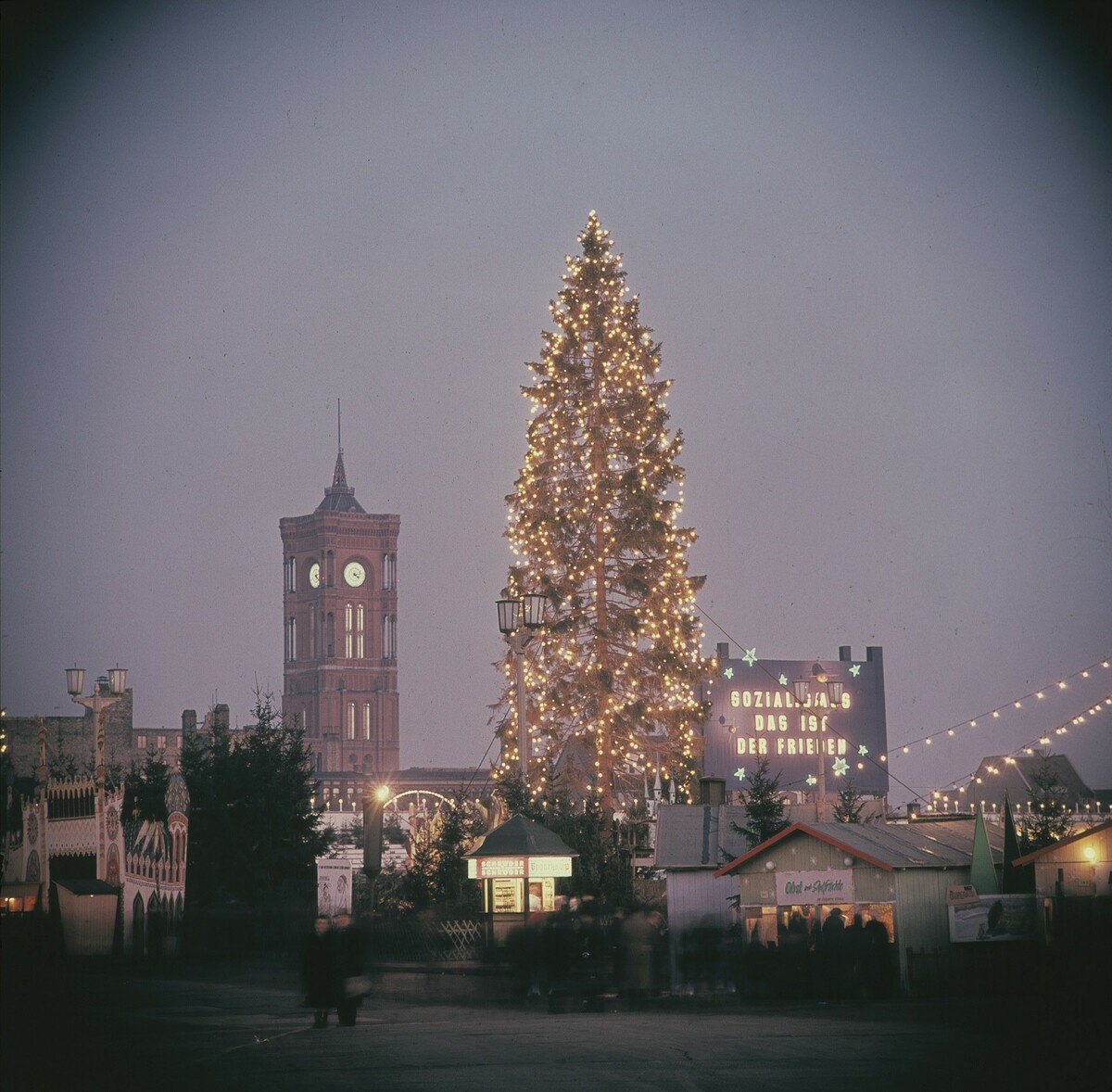Source

Source: Photo: Gerhard Kiesling.
bpk-Bildagentur, image number
00027893. For rights inquiries, please contact Art Resource at
requests@artres.com (North America) or bpk-Bildagentur at
kontakt@bpk-bildagentur.de (for all other countries).
Contrary to what some West Germans believed, Christmas was not renamed or abolished in the Soviet occupation zone or the GDR. December 25 and 26 continued to be celebrated as holidays, though Easter Monday and Whit (Pentecost) Monday no longer were. Nevertheless, the regime played down the Christian elements of the holiday in order to create a secularized version of Christmas. The Christian and Socialist desire for peace was emphasized in a general way, and Christmas was redefined as a "Socialist festival of peace." In response to improved shopping opportunities in the West, the GDR temporarily increased the supply of goods at Christmas time but also criticized consumerism and asserted its own superiority in the competition between the two systems. Moreover, the SED used Christmas to disseminate ideological messages, mixing bits of folklore and Christmas tradition with propagandistic campaigns that were often linked to daily politics. For example, "A peaceful Christmas through a quick signing of the peace treaty" was the motto of the 1951 Christmas market in Berlin. In 1957, the Christmas motto was "Socialism – that is Peace." This was meant to suggest that anyone in favor of peace had to be in favor of Socialism. These words are spelled out in illuminated letters to the right of the tree in the photograph. Berlin’s “Red Town Hall” is also visible in the background.

Source: Photo: Gerhard Kiesling.
bpk-Bildagentur, image number
00027893. For rights inquiries, please contact Art Resource at
requests@artres.com (North America) or bpk-Bildagentur at
kontakt@bpk-bildagentur.de (for all other countries).
© bpk/ Gerhard Kiesling